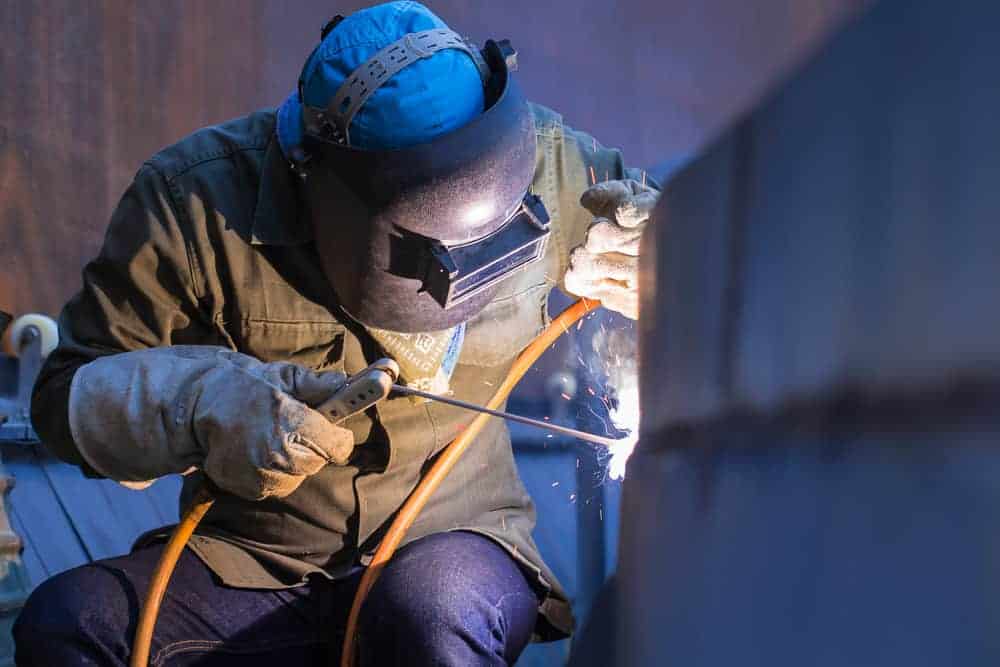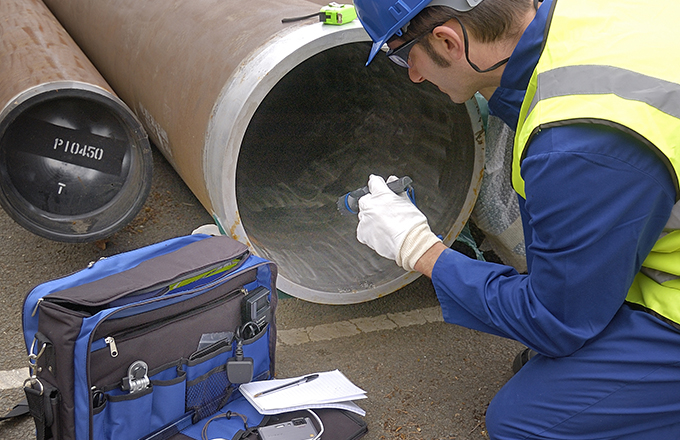A Comprehensive Guide to Comprehending Exactly How Welding Evaluation Works: Techniques, Specifications, and Finest Practices for Quality Control in Steel Manufacture
Understanding the complexities of welding examination is critical for preserving the stability of steel construction. Executing ideal techniques can dramatically boost high quality guarantee actions. The landscape of welding evaluation is not without its challenges.
Relevance of Welding Assessment
Although welding is an essential process in different markets, its integrity straight impacts the safety and security and performance of parts and structures. Efficient welding evaluation is vital for determining issues that can endanger the quality and longevity of welded joints. This procedure ensures adherence to developed criteria and specifications, which are essential for maintaining architectural honesty and functional dependability.
Welding inspection offers multiple objectives, consisting of verifying that the welding process has actually been executed properly, analyzing the quality of materials made use of, and validating that the finished product satisfies governing and industry requirements (Houston Welding Inspection). With strenuous inspection, prospective problems such as porosity, splits, and incomplete fusion can be found early, protecting against expensive repair services and alleviating security risks
Furthermore, regular welding assessments foster confidence amongst stakeholders, including engineers, clients, and governing bodies, by showing a dedication to quality control. The significance of welding examination can not be overemphasized; it is indispensable not only for compliance with lawful demands however likewise for boosting the total performance of welded structures. Ultimately, a robust welding inspection program is a proactive measure that safeguards versus failings, making certain the longevity and integrity of bonded parts in their designated applications.
Usual Welding Assessment Methods

Visual examination is the very first line of protection, enabling examiners to determine surface flaws such as cracks, damages, or insufficient combination. Radiographic screening utilizes X-rays or gamma rays to expose internal problems, making it perfect for intricate welds. Ultrasonic testing uses high-frequency acoustic waves to find subsurface defects, supplying specific dimensions of weld honesty.
Magnetic fragment screening is efficient for ferromagnetic products, highlighting surface and near-surface discontinuities when bits are put on a magnetic field. On the other hand, color penetrant screening uses a liquid color to disclose surface-breaking issues, making sure that also the smallest defects are spotted.
Each method has its restrictions and staminas, often necessitating a combination of techniques for thorough assessment - Houston Welding Inspection. By applying these evaluation methods, top quality assurance in steel construction is attained, ensuring that welded structures satisfy security and performance requirements
Market Specifications for Welding


The American Welding Society (AWS) and the American National Criteria Institute (ANSI) are 2 noticeable companies that establish welding criteria. AWS D1.1, for instance, describes the requirements for welding steel frameworks, while AWS D1.2 concentrates on aluminum. Internationally, the ISO 3834 basic addresses top quality needs for combination welding, providing a structure applicable throughout national boundaries.

Finest Practices for High Quality Guarantee
Quality assurance in welding is critical to accomplishing safe and resilient buildings. Applying ideal techniques guarantees that every weld satisfies the needed criteria and requirements. Developing a detailed top quality management system (QMS) customized to the specific welding job is necessary. This QMS must specify procedures, roles, and responsibilities to minimize threats and improve responsibility.
Normal training and accreditation of welding personnel are essential for preserving a competent workforce. Continual education on the most recent welding methods and innovations guarantees that assessors and welders are experienced about existing standards and techniques.
Furthermore, carrying out pre-weld assessments to evaluate products and devices can protect against problems before they take place. Houston Welding Inspection. During the welding procedure, real-time monitoring and paperwork of welding parameters assist identify inconsistencies instantly. Post-weld assessments should include thorough evaluations making use of non-destructive testing (NDT) approaches to ensure the stability of the welds
In addition, maintaining clear communication amongst staff member promotes a society of high quality. Routine home audits and testimonials of the welding process aid recognize areas for renovation. By sticking to these ideal methods, companies can attain optimal quality control, ultimately resulting in enhanced security and efficiency in steel manufacture projects.
Challenges in Welding Evaluation
Although welding assessment is important for guaranteeing architectural integrity, it provides a range of obstacles that can make complex the assessment process. One significant challenge is the variability in welding techniques and materials used, which can affect the uniformity of weld quality. Various welders might employ differing approaches, bring about discrepancies that inspectors requirement to evaluate and identify.
Another obstacle entails the discovery of problems. Non-destructive screening (NDT) approaches, such as radiographic and ultrasonic screening, can be complicated and need proficient professionals to analyze results accurately. Incorrect positives or downsides can happen, potentially leading to costly rework or compromised safety and security.
Additionally, the presence of ecological elements, such as temperature image source level and humidity, can affect the stability of welds and the effectiveness of examination methods. Inspectors must additionally navigate the regulatory landscape, making sure compliance with sector requirements, which can vary by territory and application.
Verdict
In verdict, welding evaluation plays a vital function in ensuring the honesty and safety of steel fabrication. Using a variety of examination methods, sticking to recognized sector standards, and implementing efficient quality administration techniques collectively boost the reliability of bonded frameworks. In spite of the challenges faced in the examination procedure, a commitment to continuous renovation and adherence to ideal methods can dramatically reinforce the top read review quality guarantee framework, promoting better self-confidence among stakeholders in the welding market.
Reliable welding examination is important for determining issues that could jeopardize the top quality and resilience of welded joints.Additionally, regular welding inspections foster confidence amongst stakeholders, consisting of designers, customers, and regulative bodies, by showing a commitment to top quality assurance.The American Welding Society (AWS) and the American National Criteria Institute (ANSI) are two prominent companies that establish welding criteria. Throughout the welding procedure, real-time monitoring and documentation of welding specifications assist determine inconsistencies quickly. In spite of the difficulties dealt with in the assessment procedure, a dedication to constant enhancement and adherence to finest methods can considerably reinforce the high quality assurance framework, cultivating higher confidence among stakeholders in the welding industry.
Comments on “Detailed Houston Welding Inspection Services for Quality Assurance”